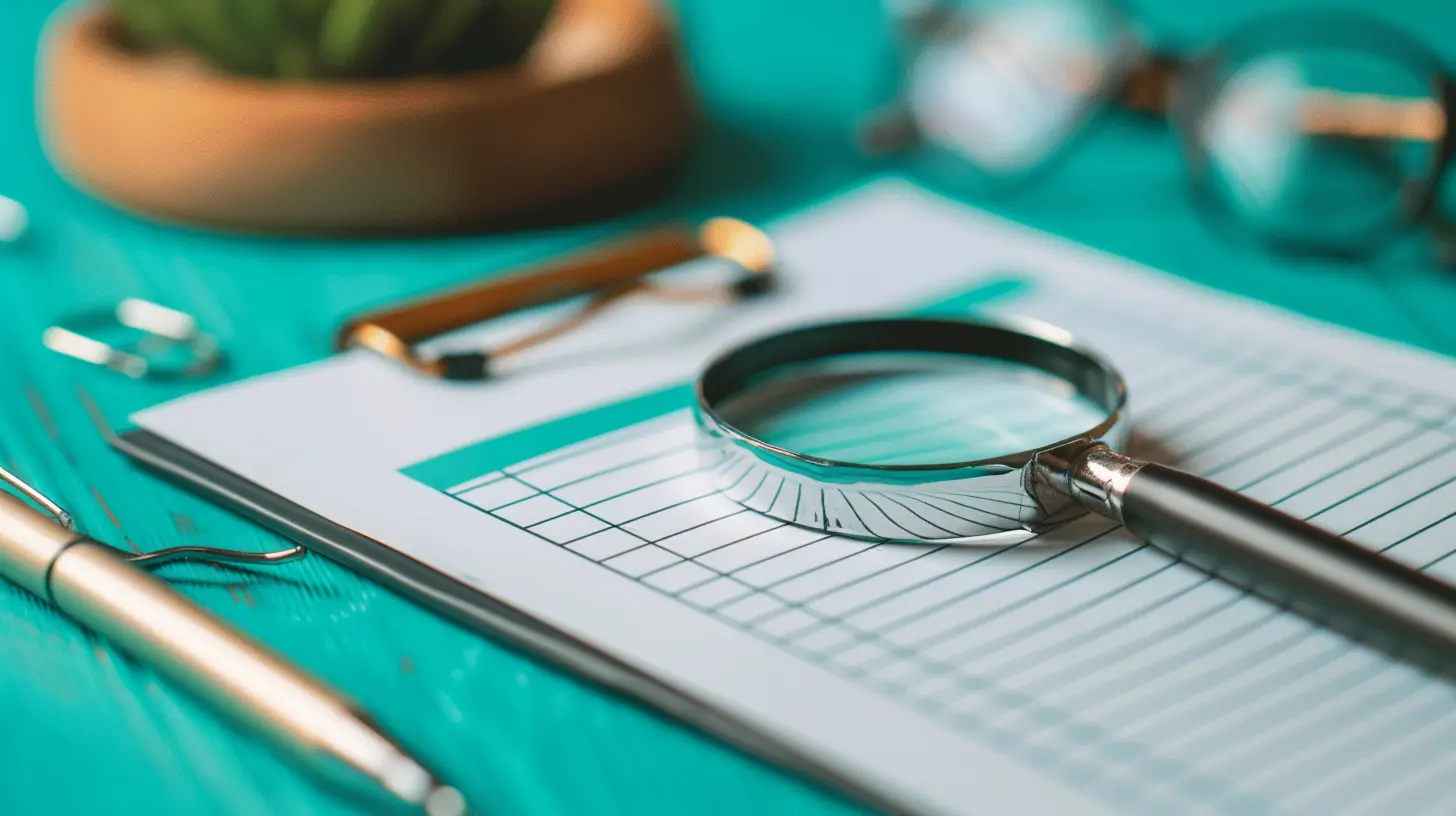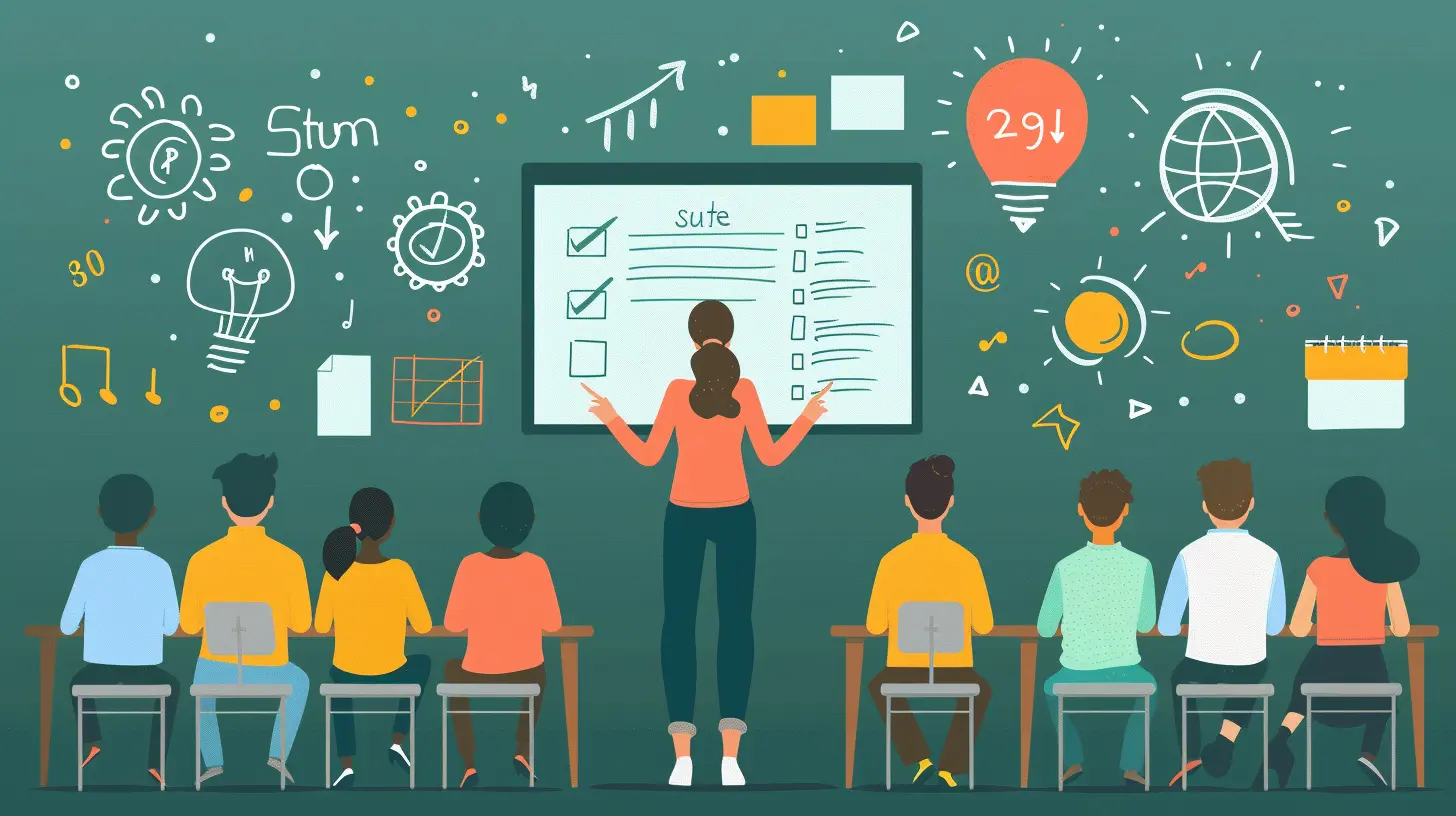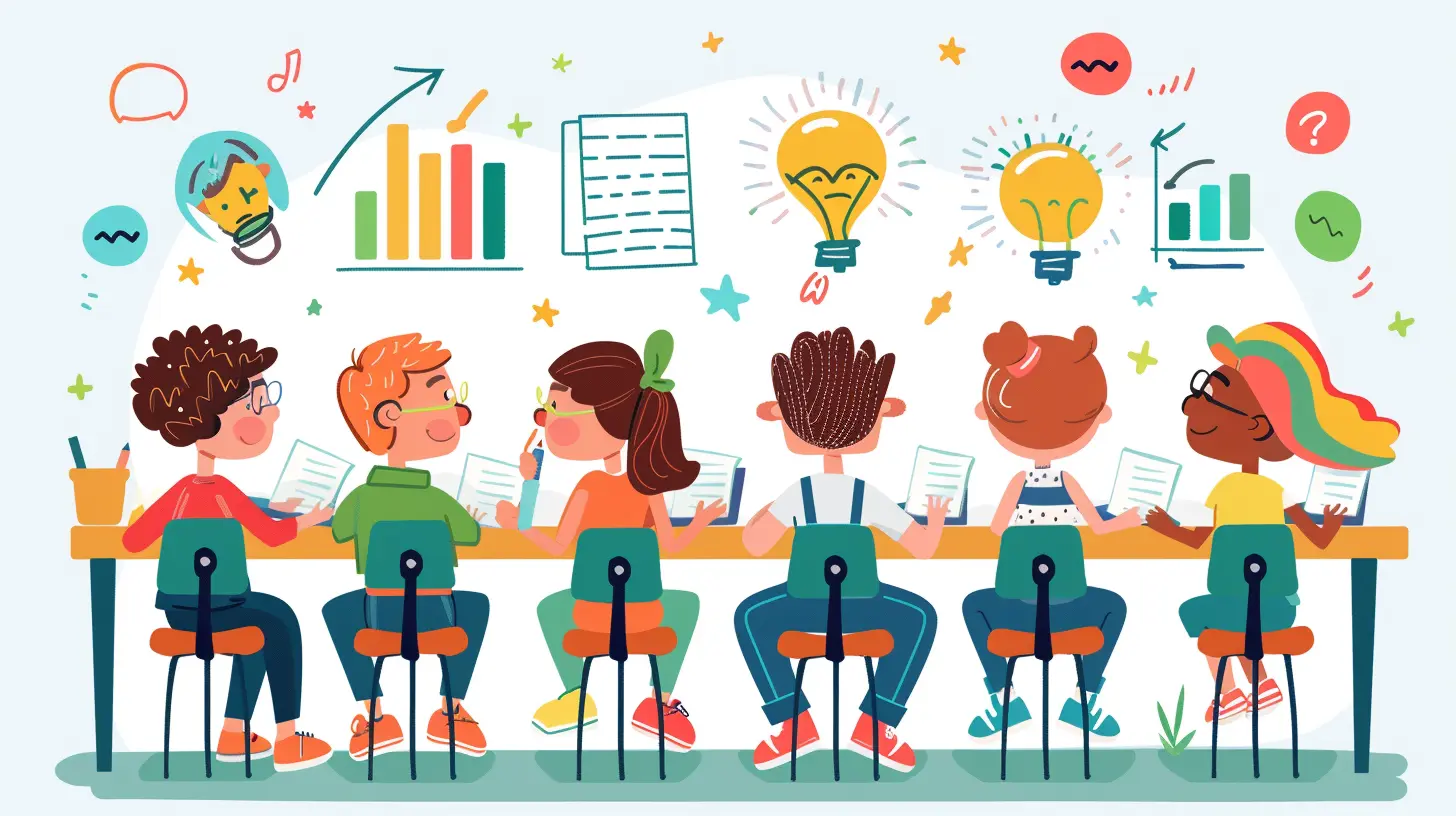Empowering Students Through Self-Assessment: A Teacher's Guide
25 June 2025
Introduction
Have you ever wondered how students can take more control of their learning? Imagine a classroom where students don't just memorize information but actively engage in assessing their own progress. Sounds amazing, right? That’s the power of self-assessment.
Self-assessment isn't just a trendy buzzword—it's a transformative tool that fosters independence, critical thinking, and lifelong learning habits. When students evaluate their own work, they take ownership of their learning journey. But here's the catch: for self-assessment to be truly effective, it needs proper guidance from teachers.
So, as an educator, how can you successfully integrate self-assessment into your classroom? Buckle up, because this guide will walk you through everything you need to know! 
What Is Self-Assessment and Why Does It Matter?
Self-assessment is the process where students reflect on their own learning, evaluate their strengths and weaknesses, and set goals for improvement. Instead of waiting for external feedback, they develop the ability to judge their own work and make meaningful adjustments.But why does it matter? Because students who assess themselves:
- Become more engaged in their learning
- Develop problem-solving skills
- Build confidence in their abilities
- Learn to take responsibility for their progress
In essence, self-assessment shifts the focus from simply getting grades to real learning and growth. 
The Benefits of Self-Assessment in Education
1. Encourages Metacognition
Metacognition—thinking about thinking—helps students understand their learning process. When they reflect on what strategies work best for them, they make smarter study choices.2. Builds Independence
No more waiting for the teacher to tell them what’s right or wrong! Self-assessment empowers students to take initiative, boosting their self-reliance and confidence.3. Enhances Critical Thinking
Students who frequently assess their work develop analytical skills. They learn to ask important questions like, “What can I improve?” or “Did I meet the assignment criteria?”4. Reduces Anxiety Around Grades
When students focus on improvement rather than just results, they develop a growth mindset. Instead of seeing grades as judgments, they view them as stepping stones to success.5. Strengthens Teacher-Student Interaction
Self-assessment fosters open conversations between educators and students. Instead of one-sided feedback, assessment becomes a two-way street where students express their learning challenges and victories.
How to Integrate Self-Assessment in Your Classroom
Now that we know the why, let’s get into the how. Implementing self-assessment doesn't have to be complicated. Here are some simple yet effective strategies to make it work in your classroom.1. Use Rubrics for Clear Expectations
Rubrics act like roadmaps. When students know exactly what’s expected, they can assess their work more effectively. Provide a clear rubric at the beginning of an assignment so they can measure their progress accurately.2. Teach Reflection Techniques
Reflection isn’t something all students naturally do—it needs to be taught. Encourage students to ask themselves:- What did I do well?
- What areas need improvement?
- How can I perform better next time?
Journals, exit tickets, or even group discussions can help students reflect meaningfully on their learning.
3. Encourage Peer Reviews
Sometimes, students find it easier to assess each other’s work before tackling their own. Organizing peer review sessions helps them see different perspectives and refine their analytical skills.4. Implement Self-Assessment Checklists
A simple checklist can be a game-changer. Before submitting an assignment, have students go through a self-checklist. Questions might include:✔ Did I follow the instructions completely?
✔ Have I checked for grammar and spelling mistakes?
✔ Does my work meet the required criteria?
This step makes sure students take responsibility before hitting submit.
5. Use Traffic Light Cards
A fun and visual way to assess understanding is through traffic light cards:🟢 Green = “I fully understand this concept.”
🟡 Yellow = “I kind of get it, but I need some help.”
🔴 Red = “I’m completely lost.”
This quick check-in helps teachers gauge student progress while encouraging honest self-reflection.
6. Digital Tools for Self-Assessment
Technology makes self-assessment even easier! Use tools like:- Google Forms for quick self-evaluation surveys
- Padlet for self-reflection boards
- Flipgrid for video reflections
- Kahoot! Quizzes so students can test their own knowledge
These tools make self-assessment interactive and engaging! 
Addressing Common Challenges in Self-Assessment
While self-assessment is powerful, let’s be real—it’s not always smooth sailing. Here are some common hurdles and solutions.1. Students Might Overestimate or Underestimate Their Abilities
Not all students will accurately assess themselves. Some may be too hard on themselves, while others may overrate their performance.Solution: Teach them how to use rubrics effectively and provide guided practice in self-reflection before expecting them to do it independently.
2. Fear of Being Honest
Some students may be hesitant to admit their weaknesses, fearing judgment.Solution: Foster a classroom culture that values growth over perfection. Reinforce the idea that mistakes are just learning opportunities.
3. Time Constraints
Teachers already have tight schedules, so adding self-assessment might feel like another burden.Solution: Incorporate self-assessment into existing class activities, like warm-ups, reflections, or quick discussions, to make it seamless.
4. Lack of Motivation
Some students may see self-assessment as just another boring task.Solution: Make it engaging! Use gamification, discussions, or even rewards to encourage participation.
Final Thoughts
Empowering students through self-assessment isn’t just about giving them a checklist or asking them to reflect now and then. It’s about embedding a mindset of growth, independence, and responsibility into their learning journey.As teachers, our goal isn’t just to deliver knowledge—it’s to create lifelong learners. And self-assessment is a surefire way to make that happen. So, why not take the plunge? Start small, experiment with what works best for your class, and watch as your students turn into confident, self-directed learners.
After all, the best lessons aren’t just the ones we teach—they’re the ones students discover for themselves.
all images in this post were generated using AI tools
Category:
Self AssessmentAuthor:

Anita Harmon
Discussion
rate this article
2 comments
Caelum McIntyre
This article offers valuable insights into the importance of self-assessment in empowering students. By encouraging self-reflection, teachers can help students take ownership of their learning. The practical strategies provided are easy to implement and can significantly enhance student engagement and accountability in the classroom. A must-read for educators!
November 21, 2025 at 12:55 PM
Simone Wagner
Great insights! Self-assessment truly empowers students to take charge of their learning. It not only fosters independence but also builds confidence. Excited to implement these strategies in my classroom—thanks for sharing such valuable tips!
July 18, 2025 at 2:52 AM

Anita Harmon
Thank you! I'm glad you found the insights valuable. Wishing you great success in implementing these strategies in your classroom!


